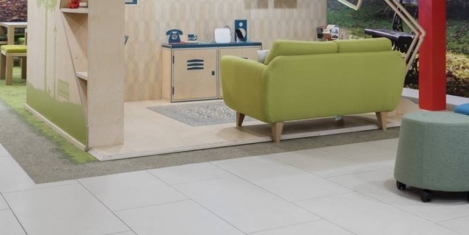June 26, 2017
US experiences huge increase in telecommuting since 2005, claims study 0
 FlexJobs and Global Workplace Analytics have published their 2017 State of Telecommuting in the US Employee Workforce report, which claims to be the most up-to-date and comprehensive data analysis available on the state of working from home in the United States. According to the study, the number of people telecommuting in the US increased by 115 percent between 2005 and 2015. Other key findings of the study include: 3.9 million U.S. employees, or 2.9 percent of the total U.S. workforce, work from home at least half of the time, up from 1.8 million in 2005 (a 115 percent increase since 2005); the average telecommuter is 46 years of age or older, has at least a bachelor’s degree, and earns a higher median salary than an in-office worker; roughly the same population of women and men telecommute; and in more than half of the top US metro areas telecommuting exceeds public transportation as the commute option of choice. The report’s definition of telecommuting refers to non-self-employed people who principally work from home at least half of the time.
FlexJobs and Global Workplace Analytics have published their 2017 State of Telecommuting in the US Employee Workforce report, which claims to be the most up-to-date and comprehensive data analysis available on the state of working from home in the United States. According to the study, the number of people telecommuting in the US increased by 115 percent between 2005 and 2015. Other key findings of the study include: 3.9 million U.S. employees, or 2.9 percent of the total U.S. workforce, work from home at least half of the time, up from 1.8 million in 2005 (a 115 percent increase since 2005); the average telecommuter is 46 years of age or older, has at least a bachelor’s degree, and earns a higher median salary than an in-office worker; roughly the same population of women and men telecommute; and in more than half of the top US metro areas telecommuting exceeds public transportation as the commute option of choice. The report’s definition of telecommuting refers to non-self-employed people who principally work from home at least half of the time.
(more…)















 An increasing number of workers are taking on caring responsibilities, be this for children, elderly relatives or other dependents, and it’s becoming a major cause of workforce absence, claims new research. According to data released by group risk industry body GRiD, for 61 percent of employers these issues are a main cause of short-term absence (less than 4 weeks); for 49 percent of employers these issues are a main cause of mid-term absence (4 weeks to 6 months) and for 43 percent of employers these issues are a main cause of long-term absence (in excess of 6 months). They can also be a contributory factor in the development of mental illness or the deterioration of mental health. Indeed, mental ill-health is another major cause of absence, due to the knock-on effects of stress and deteriorating mental health that results in more absence. In terms of what employers are doing to reduce absence and improve attendance, flexible working comes out as the top-rated solution, with 36 percent of employers citing this as one of the measures they have put in place to minimise absence.
An increasing number of workers are taking on caring responsibilities, be this for children, elderly relatives or other dependents, and it’s becoming a major cause of workforce absence, claims new research. According to data released by group risk industry body GRiD, for 61 percent of employers these issues are a main cause of short-term absence (less than 4 weeks); for 49 percent of employers these issues are a main cause of mid-term absence (4 weeks to 6 months) and for 43 percent of employers these issues are a main cause of long-term absence (in excess of 6 months). They can also be a contributory factor in the development of mental illness or the deterioration of mental health. Indeed, mental ill-health is another major cause of absence, due to the knock-on effects of stress and deteriorating mental health that results in more absence. In terms of what employers are doing to reduce absence and improve attendance, flexible working comes out as the top-rated solution, with 36 percent of employers citing this as one of the measures they have put in place to minimise absence.




 A majority of employees (62 percent) believe their company culture is one of the biggest hurdles in the journey to becoming a digital organisation, and this is putting companies at risk in falling behind competition in today’s digital environment claims a new report.
A majority of employees (62 percent) believe their company culture is one of the biggest hurdles in the journey to becoming a digital organisation, and this is putting companies at risk in falling behind competition in today’s digital environment claims a new report. 











June 29, 2017
The onus is on employers to create working conditions that attract people 0
by Graham White • Comment, Facilities management, Wellbeing
(more…)